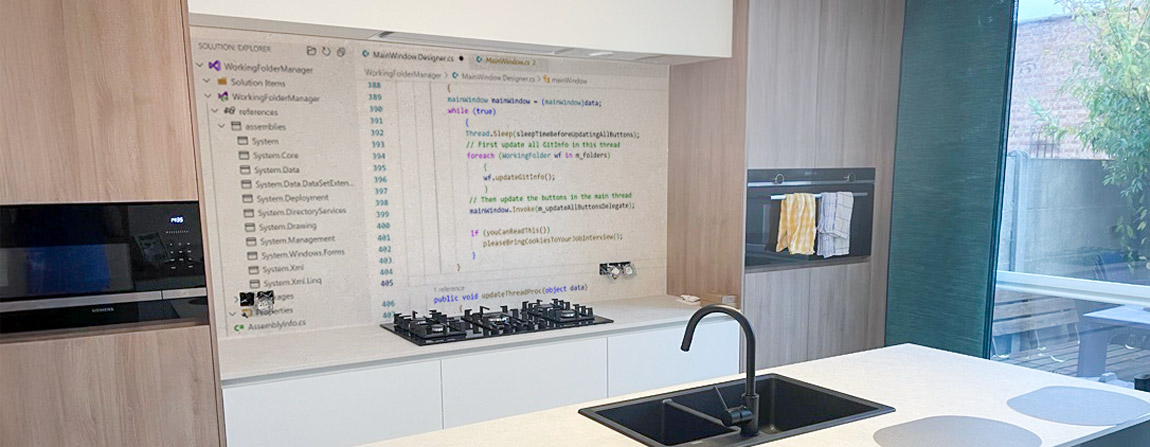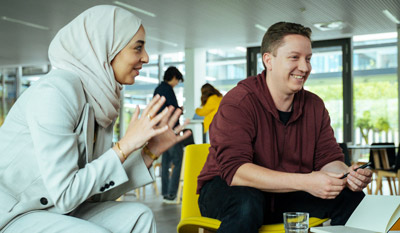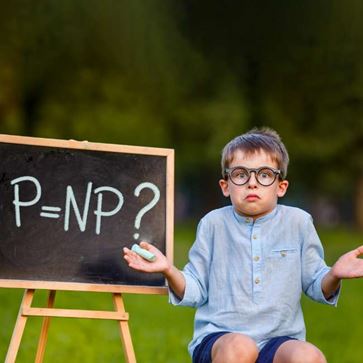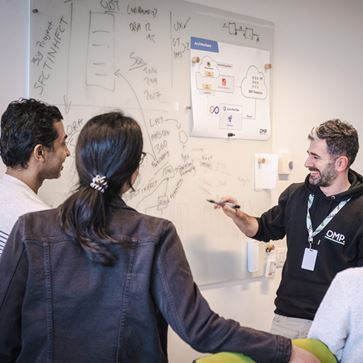
Cooking up code: How a kitchen renovation made me a better developer
Quinten Soetens - May 27

Not long ago, I stood in my kitchen, looking around and thinking, “Okay... It’s time for change.” Over the years, I had done minor fixes like tightening loose shelf screws, realigning cupboard doors, and upgrading to a more efficient fridge and oven. But a few things still nagged at me: the cooking stove and dishwasher were aged, and I kept dreaming of having a real kitchen island.
"So, my wife and I decided it was time for change. Kitchen 2.0 was about to become a reality."
Demo day, developer style
We hired a contractor for most of the heavy lifting, but I took on the task of tearing down the old kitchen and prepping our house for the upcoming transformation.
I moved the main kitchen functions to our living room and labeled them "deprecated." This allowed us to keep using them for now, but once the new kitchen was ready (in the latest release of our home), the old setup would officially retire. For the time being, we maintained backward compatibility to keep our most important customers (the kids) happy.
Seeing my home as a legacy codebase
Blog post
"While working on this setup, it hit me: my house is kind of like a software system. Actually, it’s a legacy system. It was built in the 1930s, and it shows."
Each room represents a different module with various functionalities, from simple tasks like sitting, eating, working, and sleeping to more complex ones like bathing, showering, and cooking. Renovating the house felt very much like refactoring a system to add new features.
Just like in software development, we had to do some temporary restructuring (moving functionality around to make space for the new kitchen), maintain backward compatibility (ensuring the temporary kitchen setup could handle our daily needs), and make deprecated functionality obsolete (getting rid of the temporary kitchen once the new one was fully operational).

Blog post
What renovation taught me about software
In the end, our renovation was a success, and Kitchen 2.0 was a significant upgrade. Cooking is more fun now. Everything flows better. Life feels easier. It reminded me of something important.
"What we do as software developers has a real impact. Just like a kitchen upgrade improves daily life, the software we create at OMP helps supply chain planners do their jobs more smoothly."
In both cases, success comes from thoughtful planning, clean upgrades, and teamwork. You need people with diverse expertise working together, solving problems, and building something that lasts.
We don’t only write code. We solve real problems and contribute to innovation. Additionally, in software development, you can't do it alone; you need the diverse expertise of various professionals. Good teamwork is the whole point around here.
Why I love writing code
Blog post

"This is also why I love my job! Our codebase is like a well-maintained house, where each room serves a purpose, and every corner has a story."
But when the time comes to upgrade or refactor, we approach it with the same care and excitement as a home renovation. We plan meticulously, execute flawlessly, and ensure that every change enhances functionality and maintainability.
Blog post

Quinten Soetens
Software Expert at OMP
Biography
After gaining a Ph.D. in Software Engineering from the University of Antwerp, Quinten Soetens joined the OMP Product Development team to work on the Integration solution. With over a decade of experience, Quinten specializes in developing software solutions as part of the Integration team, focusing on facilitating information exchange between external programs and OMP applications, with a special emphasis on SAP integration.





